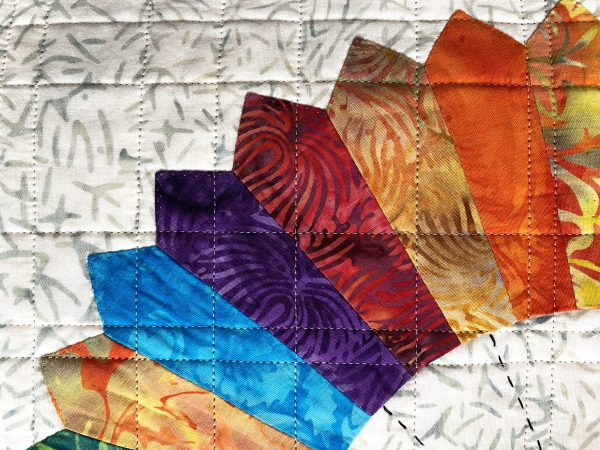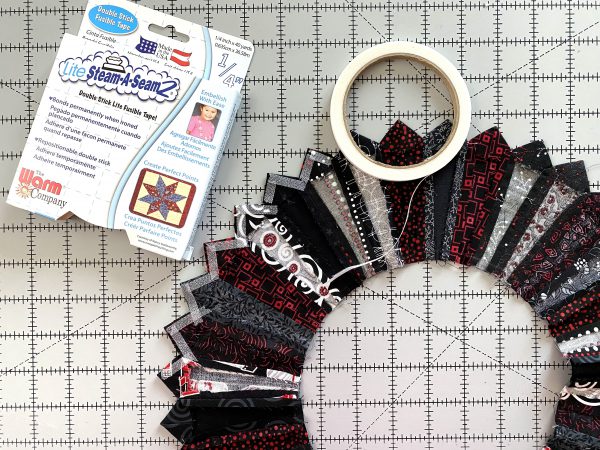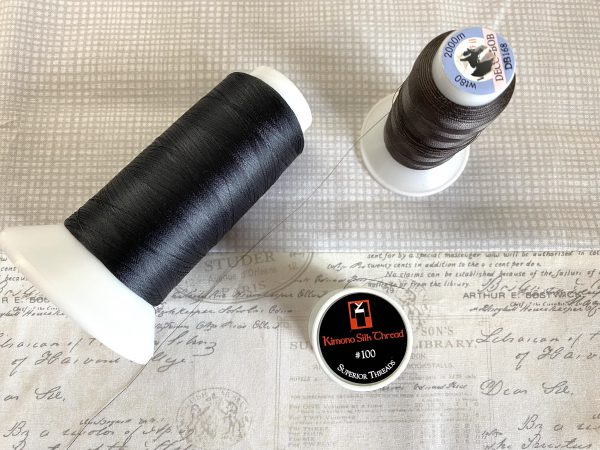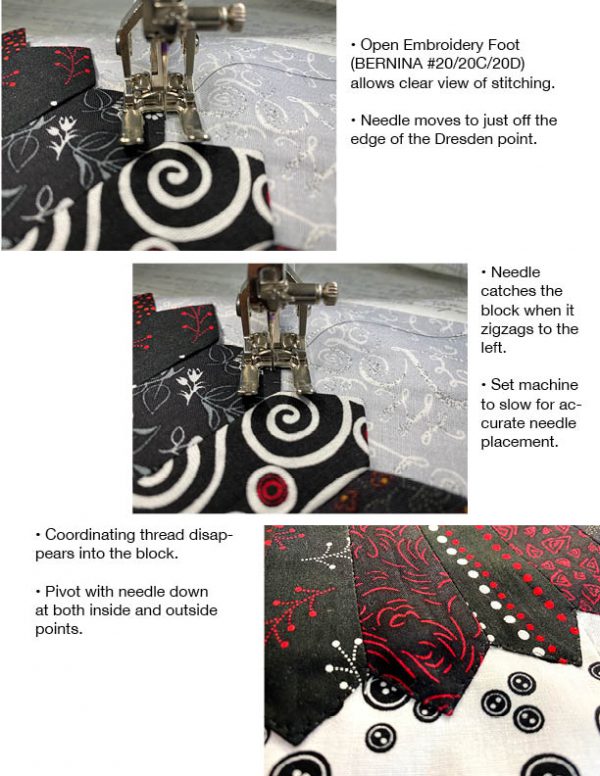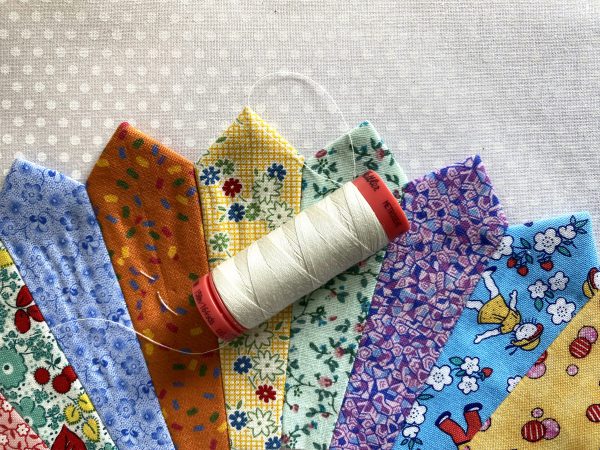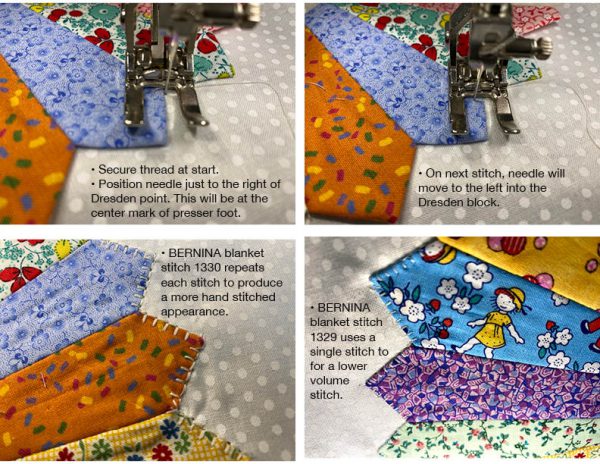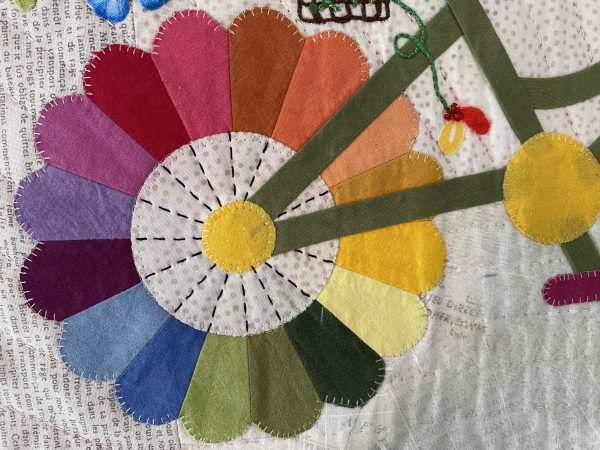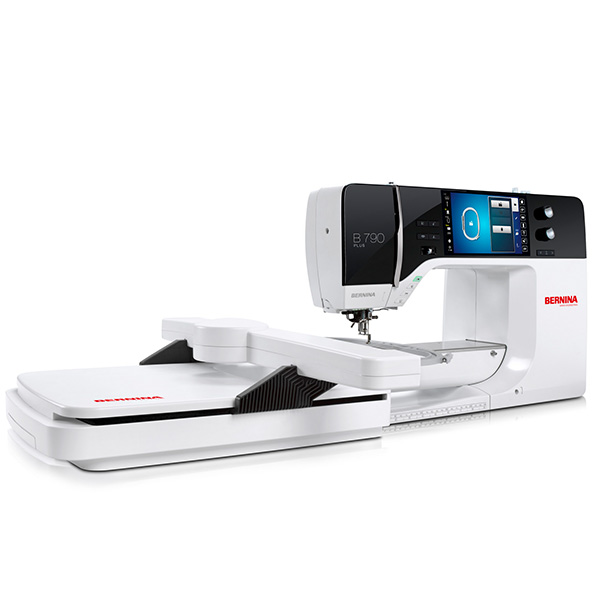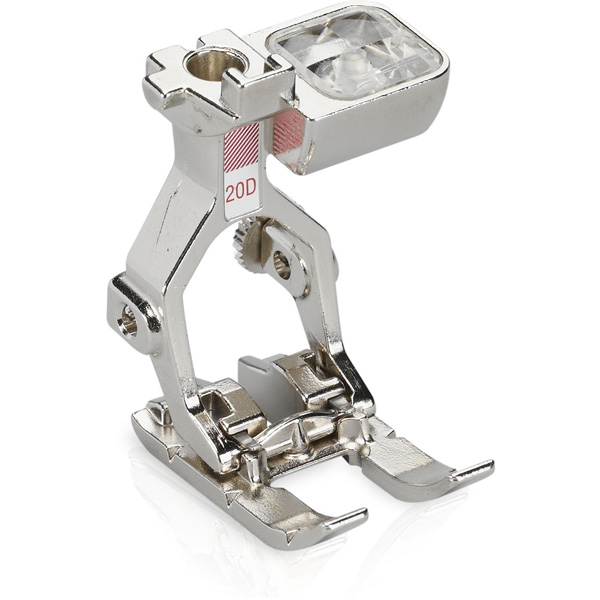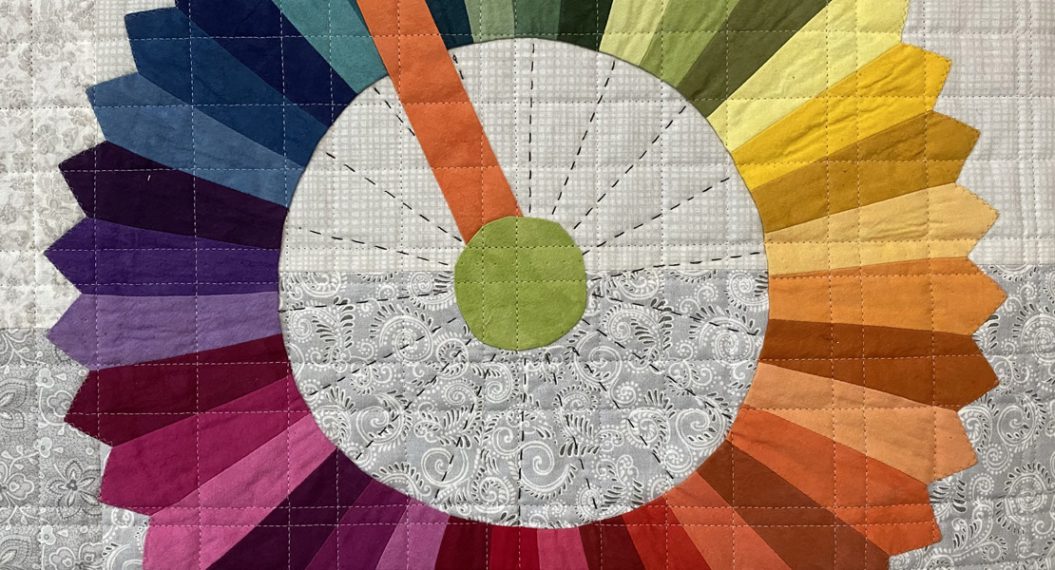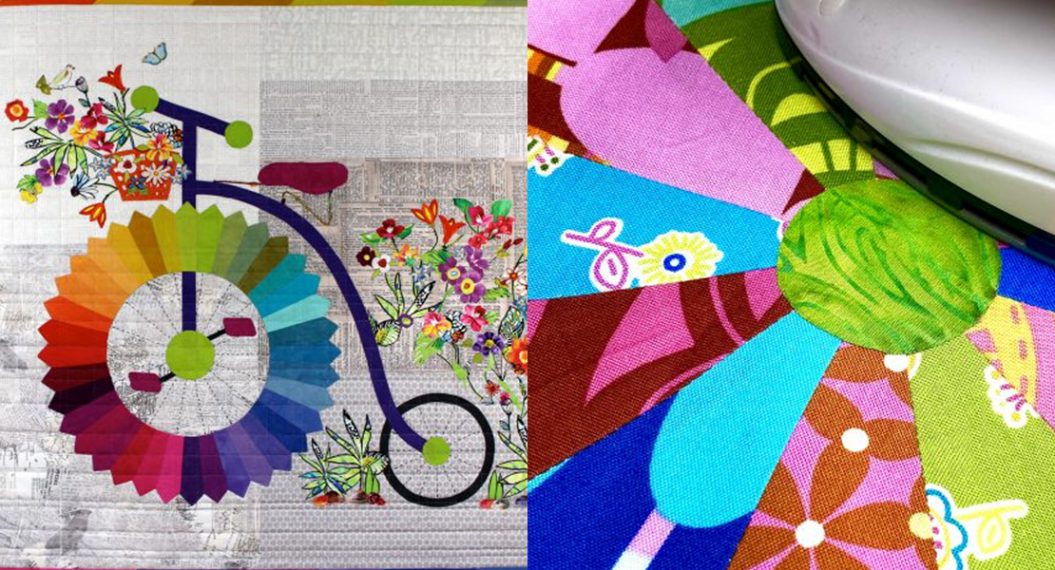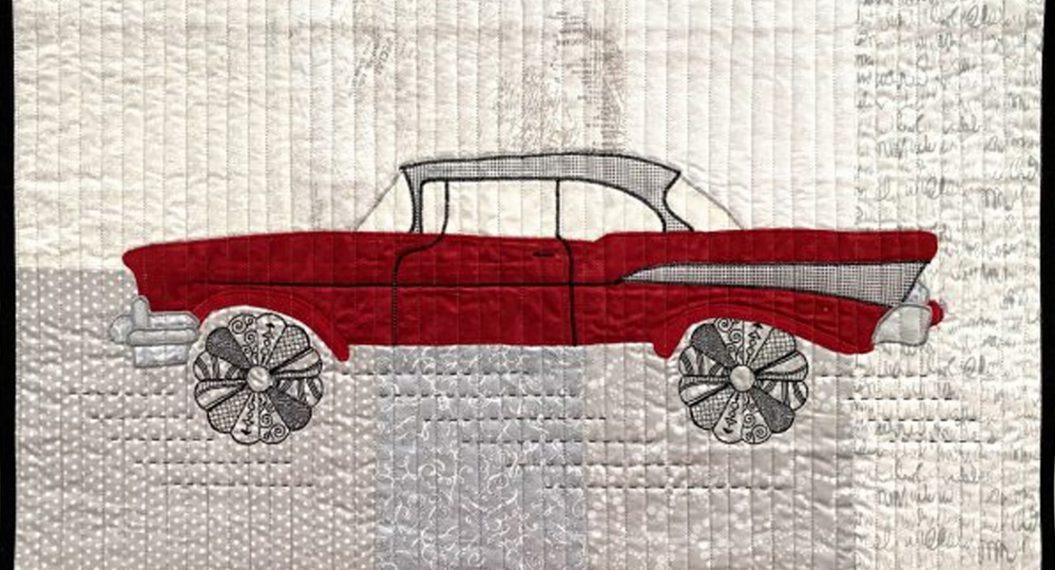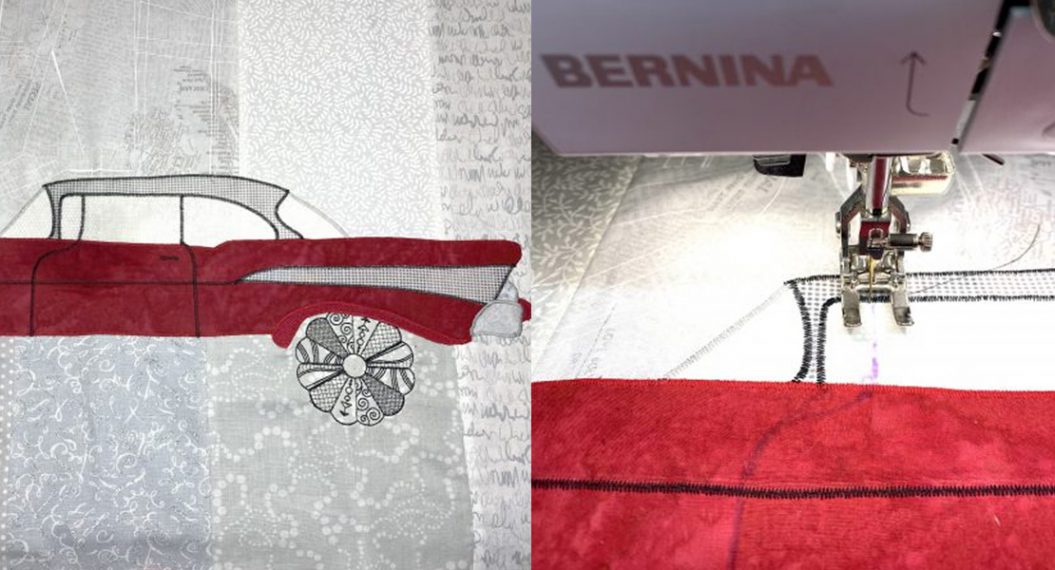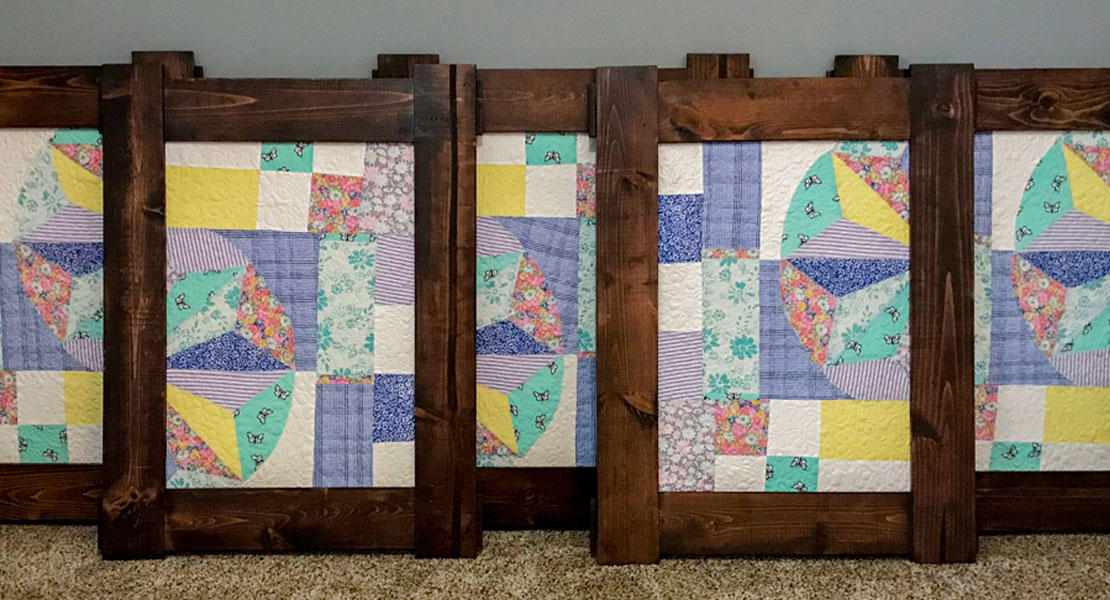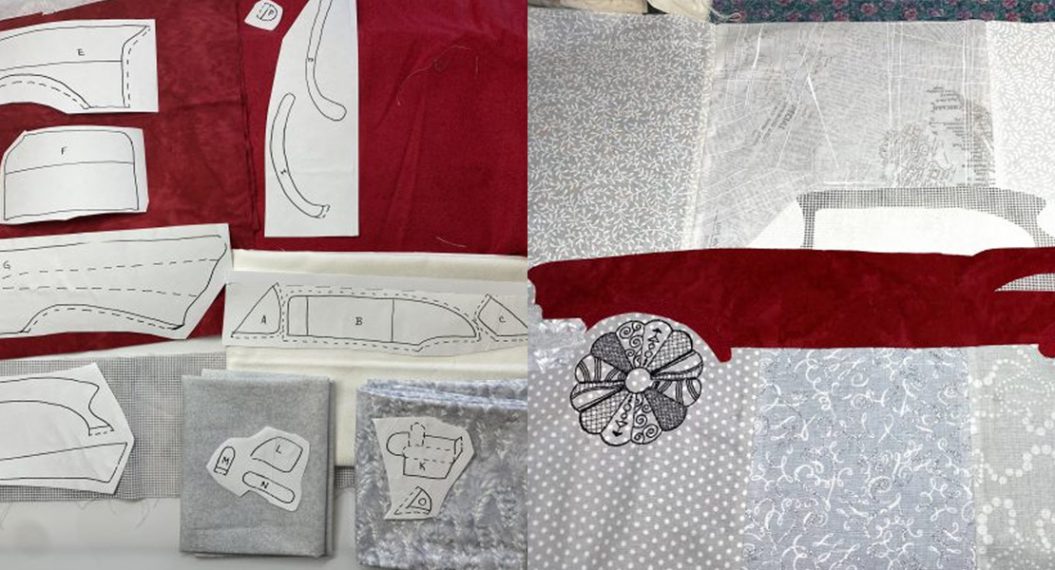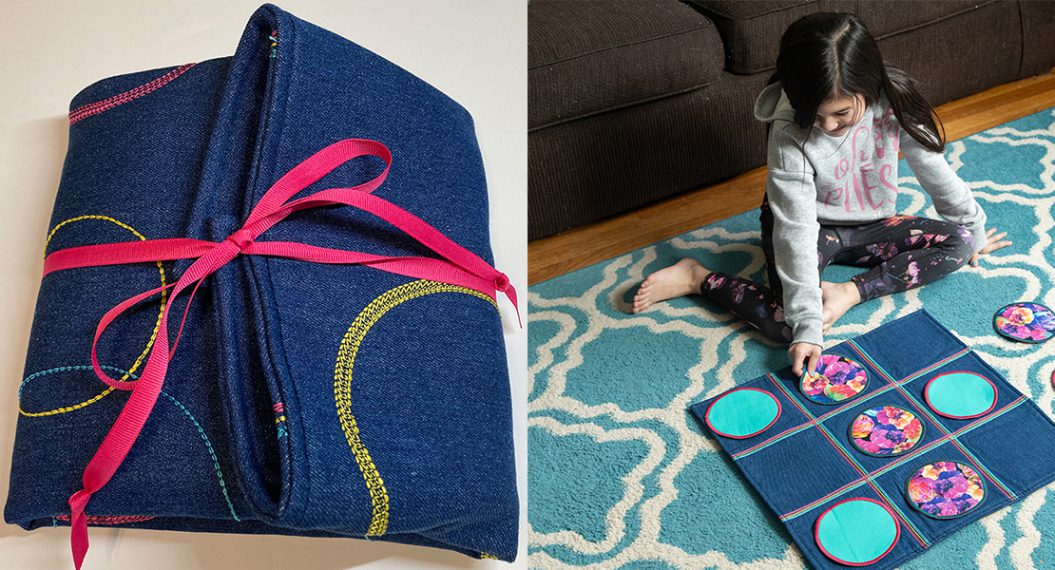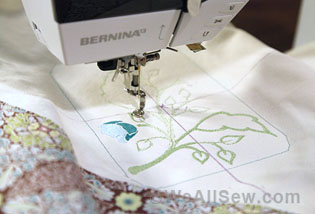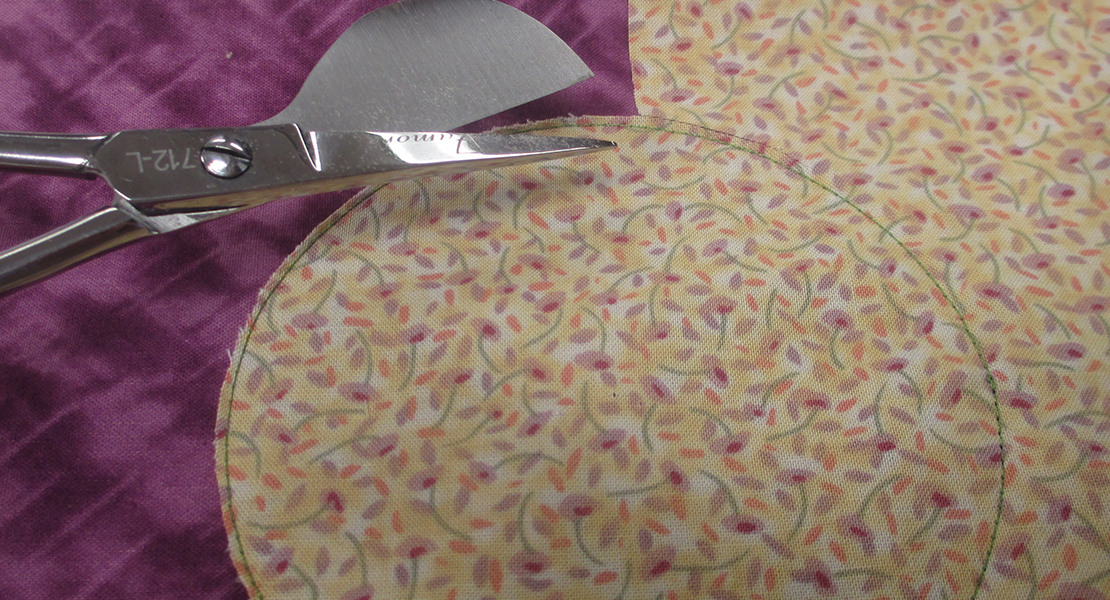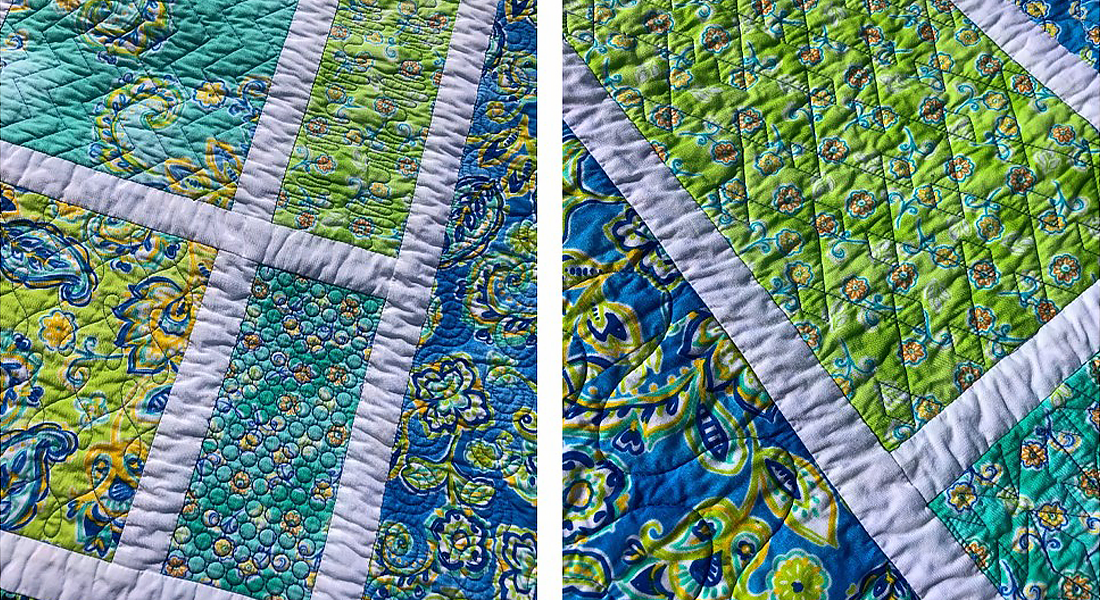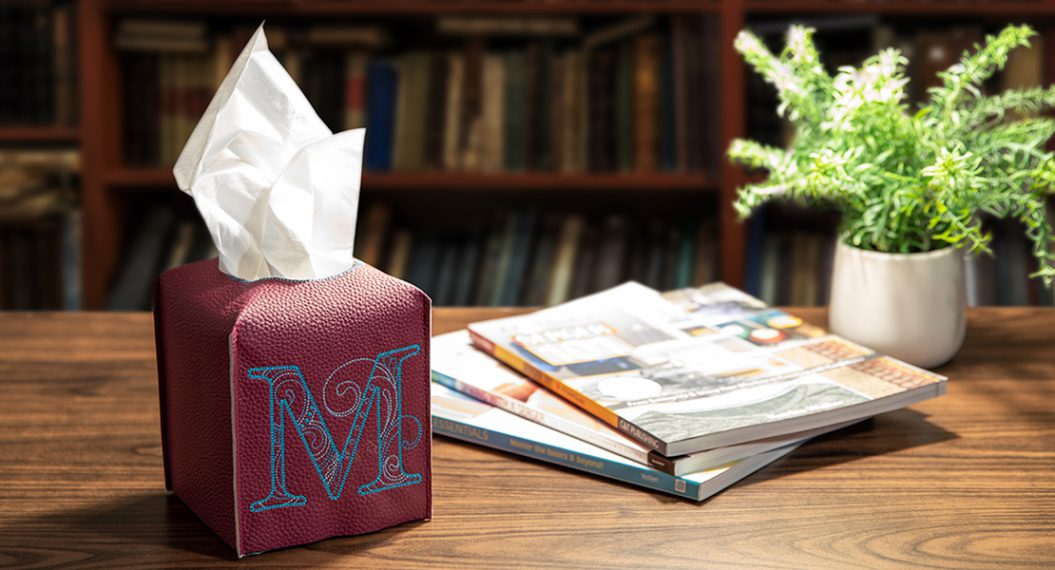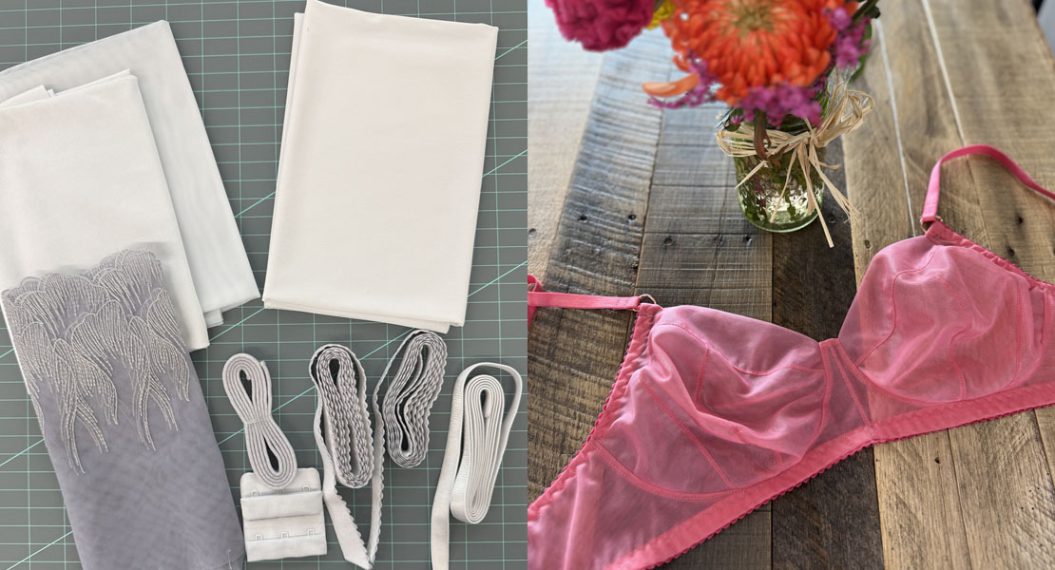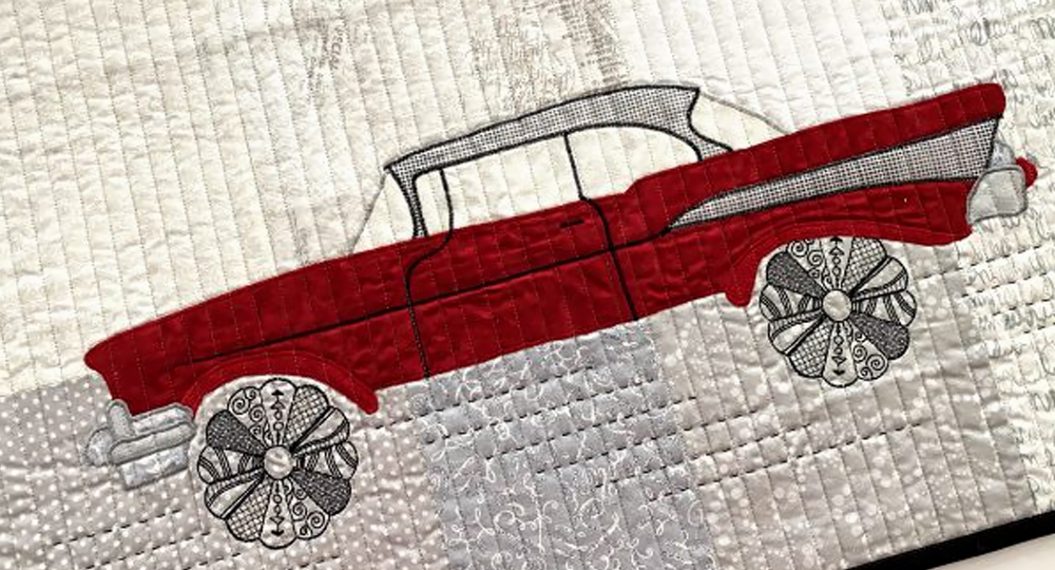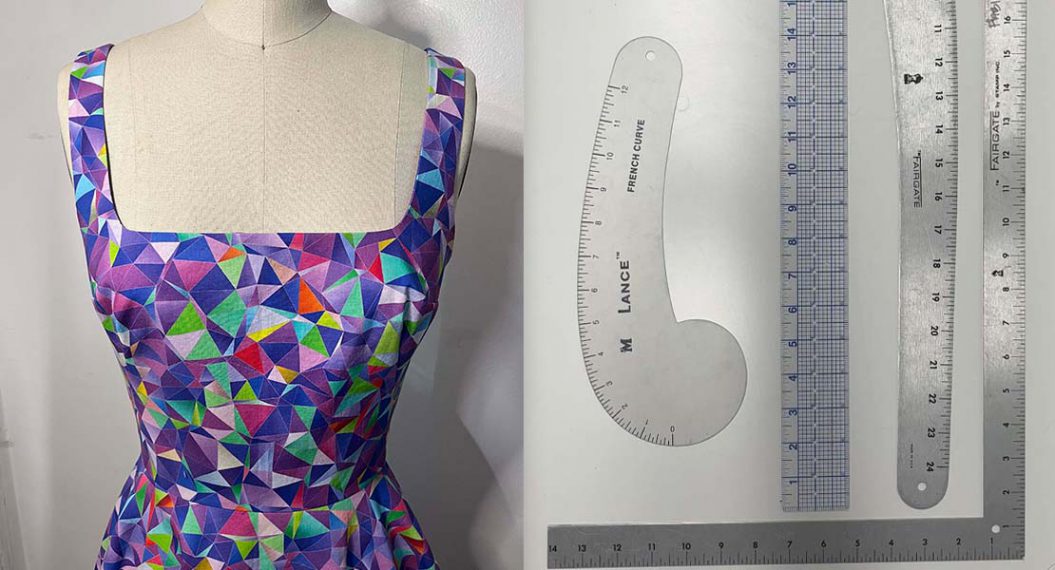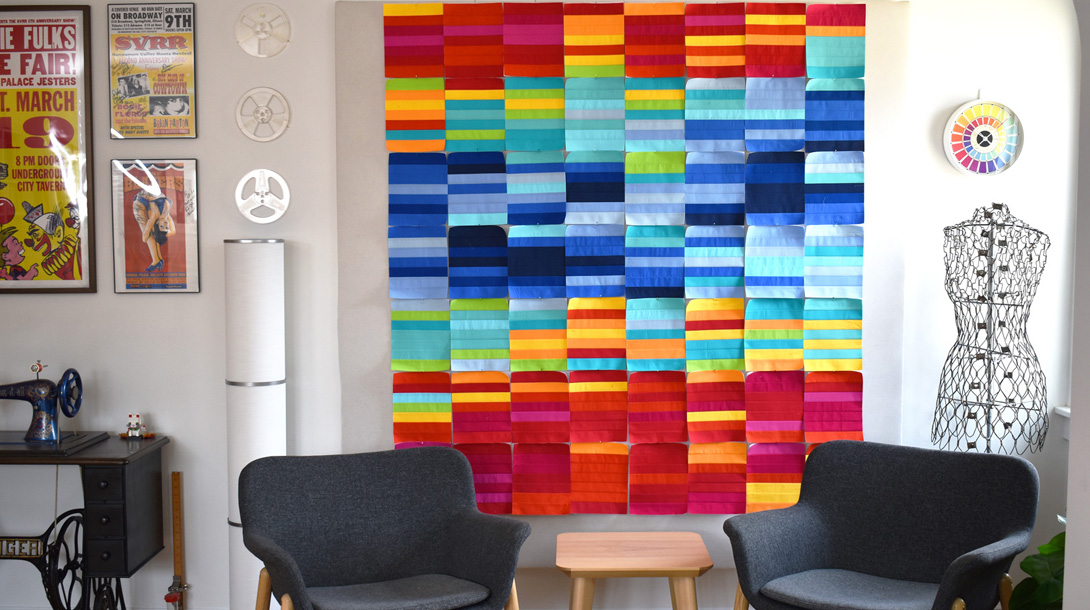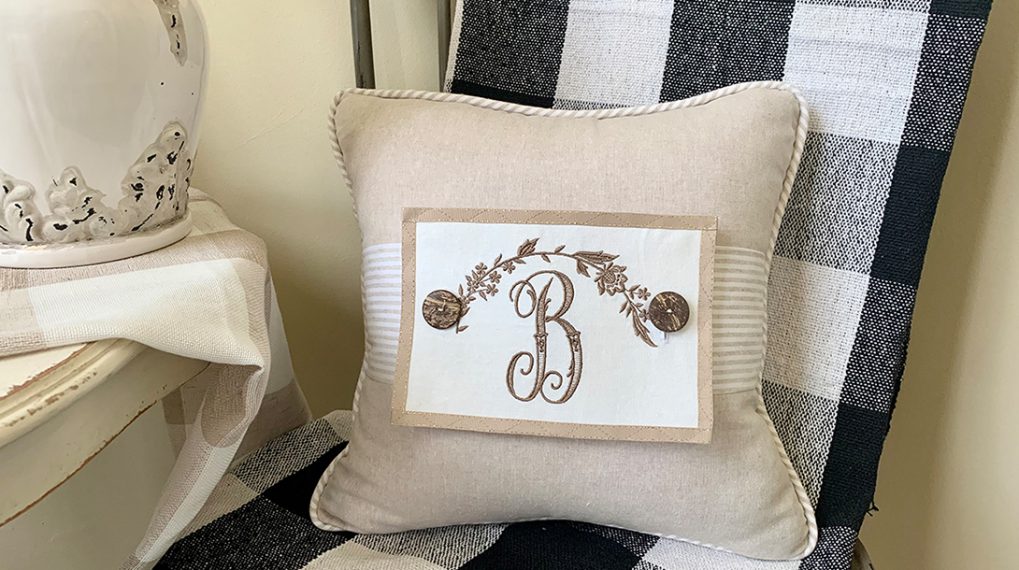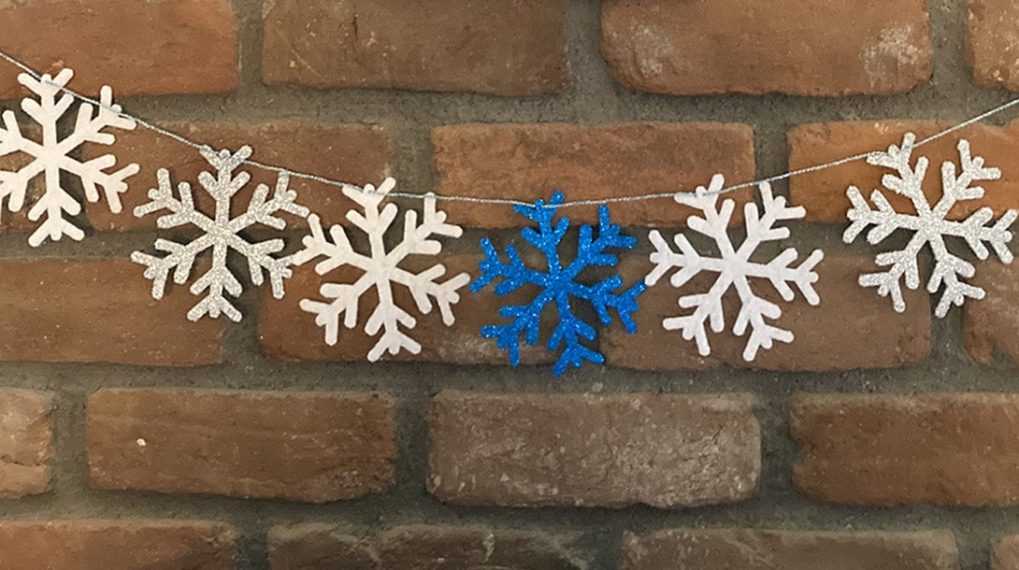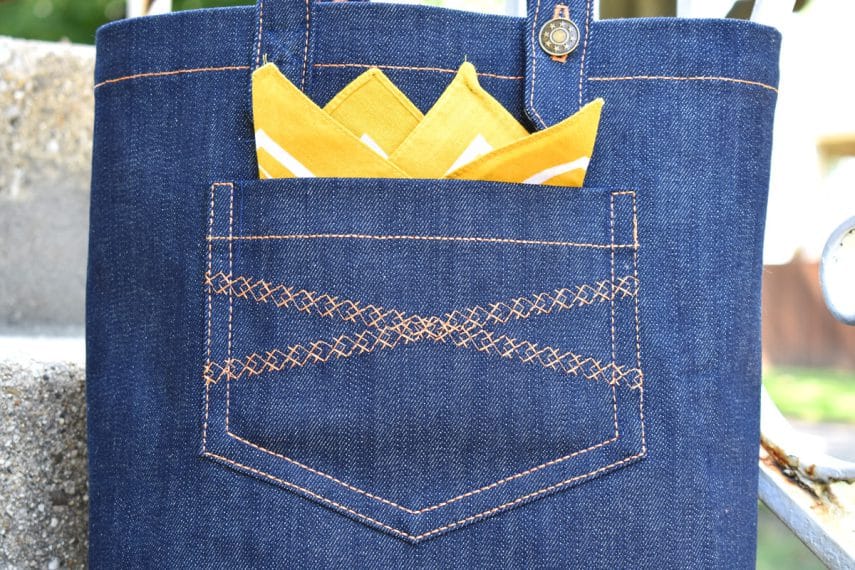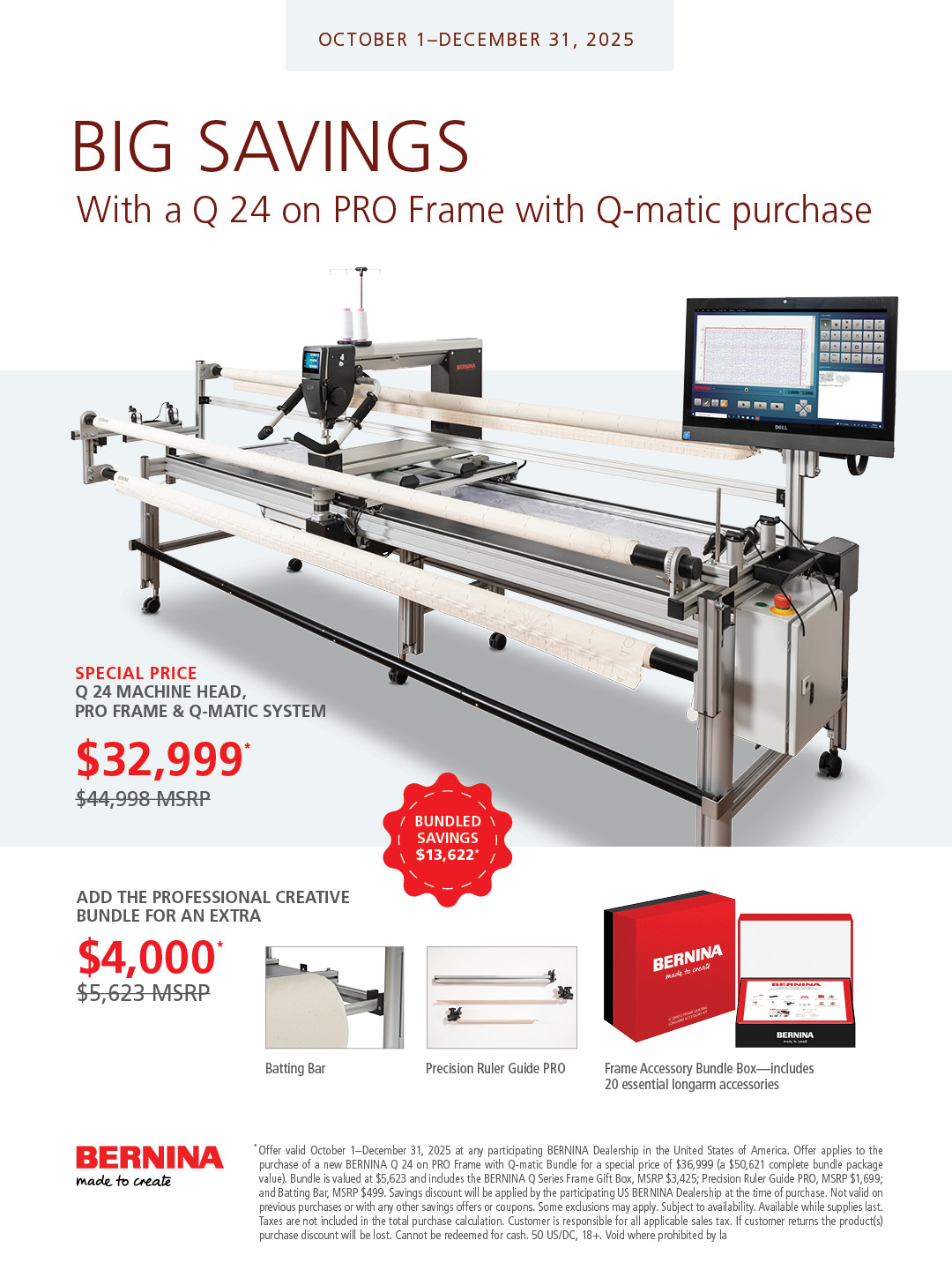Doable Dresden, Part Two: Attaching Dresden to Background Fabric
Part one of the Doable Dresden presented steps and tips to create the blades of the Dresden Plate block. This first step used traditional piecing techniques. Part two switches to the appliqué. A variety of machine appliqué techniques can be used to attach the completed Dresden to the background fabric. The intended use of the finished quilted project, the sewing products available, and the quilter’s skill level and preference determine the technique to use on a specific project.
Materials for Appliquéing Dresden Block
• 1/4 inch Lite Steam A Seam 2 – for Fused Appliqué
• 60 to 100 wt Thread – for zigzagged Appliqué
• 50 wt thread – for blanket stitched Appliqué
• Iron & Ironing board
• Open Embroidery Foot such as the BERNINA #20/20C/20D
Fused Appliqué
This techniques work well for wall quilts. The 1/4 inch roll of Lite Steam A Seam 2 creates a bond that hold well. Art quilts are generally used as art work which in not folded, pulled or washed in the machine. Fusing can also be used when the project will have heavy quilting that further secures the Dresden block to the background fabric.
Lite Steam A Seam 2 is tacky to the touch. Tear off small strips of this fusible then stick it to the WRONG SIDE each Dresden points as shown. Cover the block with a silicone sheet or parchment paper and press. Allow it to cool before removing the protective sheet. Place the block RIGHT SIDE UP on the right side of the background fabric. Press with steam for a permanent fuse. Turn the block over and press again on the wrong side of the background fabric.
Appliqué with Zigzag Stitch
A zigzag stitch on the points of the Dresden block is a secure technique if the project will be used as a quilt, clothing or household item. The stitching will also be almost invisible when a fine, coordinating thread is used. This technique is very forgiving if your stitches aren’t exactly perfect.
Fine thread in a coordinating color will disappear into the fabric with this technique. Superior Bottom Line 60 wt thread, WonderFil DecoBob 80 wt thread or Superior Kimono Silk 100 wt thread are good choices. Check with your local quilt shop for other fine thread choices.
The zigzag stitch is set at 2.0 length and 1.2 width. Secure stitching at beginning and end.
Appliqué Blanket Stitched
Using the blanket stitch to appliqué gives the block a more hand stitched look. This option uses a heavier weight thread and shows off the stitching more than the options above. This stitch is sometimes referred to as a buttonhole stitch.
The presser foot used for blanket stitching is (BERNINA #20/20C/20D). The open area between the toes lets you see exactly what the needle is doing.
Stitch settings for the 1330 double blanket stitch are set at 3.5 for stitch width and 3.5 for stitch length. They are set larger than the single stitch to accommodate more thread. The 1329 single blanket stitch works better with lower settings, 2.6 stitch length and 2.3 stitch width. (Note: the 1329 blanket stitch is available on all BERNINA model while the 1330 blanket stitch is available on some models.)
An alternative to the pointed Dresden is the sister block, the curved edge Dresden. The blanket stitched appliqué technique works well on this block as well.
Stay Tuned
Doable Dresden – Part 3, Options for Finishing the Dresden Center
